Stand
Tisch und Tischgestell
Table and trestle
Nils Holger Moormann 2000,
Atelier Alinea 2010,
Vondingen 2012
Als junger, häufig umziehender Architekt brauchte man noch vor einiger Zeit mobile Zeichentische. Sollten es keine Platten auf Böcken, aber auch keine schraubenreichen „Eiermänner“ sein, musste man ein zerlegbares Tischgestell selbst entwickeln. Aus dem Begleiter für Wanderjahre wurde bald ein sehr leichter Tisch für die Serie, der flexibel auf die unterschiedlichen Tätigkeiten im privaten und beruflichen Umfeld reagieren konnte, sei es als Esstisch, Arbeitstisch oder auch als schnell auf- und abzubauender Besprechungstisch. Vier Beine und vier Zargen, die nicht verleimt, sondern nur lose zusammengesteckt sind, verkanten sich durch das Gewicht der aufgelegten Platte. Verschiebt man die Beine entlang der Zargen, lässt sich die Anmutung des Tisches nochmals verändern. Das Gestell aus massiver Esche ist unbehandelt in Natur oder weiß lasiert in je zwei Größen erhältlich. Es wird in einer Baumwolltasche geliefert, die alle acht Teile von Stand enthält. In ihr werden die Hölzer aufbewahrt, sollte das Gestell einmal nicht gebraucht werden. Neben der standardmäßig angebotenen, weißbeschichteten Spanplatte können auch andere rechteckige Platten in vielen Größen aus Glas, Holz, Laminat oder Stein verwendet werden.
Die Produktions- und Vertriebsweise des Möbels setzt auf regionale Strukturen und Online-Marketing. Als langlebiges Produkt mit klarem Gebrauchswert, gebaut aus Massivholz und geliefert in wiederverwendbarer Verpackung, bleibt es bezahlbar für die meisten. Anpassungsfähigkeit und Kompaktheit im Versand erreicht Stand nicht mit einem Mehr an Technik. Seine Eigenschaften ergeben sich allein aus dem gestalterischen Umgang mit den wesenhaften Bestandteilen des Gegenstandes. Seit jeher tun sich Platte, Zarge und Bein zum Tisch zusammen. Doch wer sagt, dass die Zarge mit dem Bein fest verbunden sein und in ihm enden muss? Es ist deren lose Fügung, die den Tisch zugleich bockig und schlank macht – und aus Stand ein Möbel vom Gestalter, aber kein „Designermöbel“. Nichts lässt sich wegnehmen, nichts hinzufügen. Die Konstruktion ist keine Variation von Bestehendem und weist kaum individuelle Formen auf. In ihrer Abstraktheit stellt sie eher einen eigenen Typus zwischen Bock und Gestell dar.
Not so long ago, a young architect who frequently relocated was in need of a portable drafting table. If you did not want an “Eiermann” frame with lots of screws, a new, knock-down table frame needed to be developed. The companion for the years of travel soon turned into an extremely lightweight table that is suitable for serial production and can react flexibly to the varied activities of both private and professional nature, be it as a dining table, a worktable, or a conference table that is quick to set up or take apart and pack away. The four legs and four rails are not glued together but just loosely slotted into one another. The legs tilt slightly under the weight of the tabletop and thus lock securely into position. The table’s appearance can be changed by shifting the position of the legs along the rails. The trestle frame is made of solid ash and comes in two sizes. It is available with a natural (untreated) surface or a white stain finish. All eight parts of Stand come packed in a roll-up cotton case that keeps the wooden pieces well protected should the trestle need to be stored away temporarily. In addition to the standard tabletop of white melamine-faced particleboard, other rectangular tops of many sizes can be used, whether of glass, wood, plastic laminate, or stone.
The method of production and sales for this furniture relies on regional partners and online marketing. It is a durable product with clear practical value that is made of solid wood and delivered in reusable packaging, yet it remains affordable for most. Stand achieves adaptability and compactness for efficient shipping without needing extra technology. Its properties result solely from the designer’s creative approach to the essential components of the object. Since time immemorial, top, rail, and leg have joined together to form a table. But who says that the rail must be firmly connected to the leg and end there? It is their loose assembly that makes the table both rebellious and slender at the same time – and makes Stand a piece of furniture from a designer without being “designer furniture.” Nothing can be taken away, and nothing added. The design is not a variation of anything existing and barely exhibits any individual forms. In its abstractness, it constitutes more its own type, a cross between trestle and frame.
Weiterlesen /
Read more
Text einklappen /
Close text



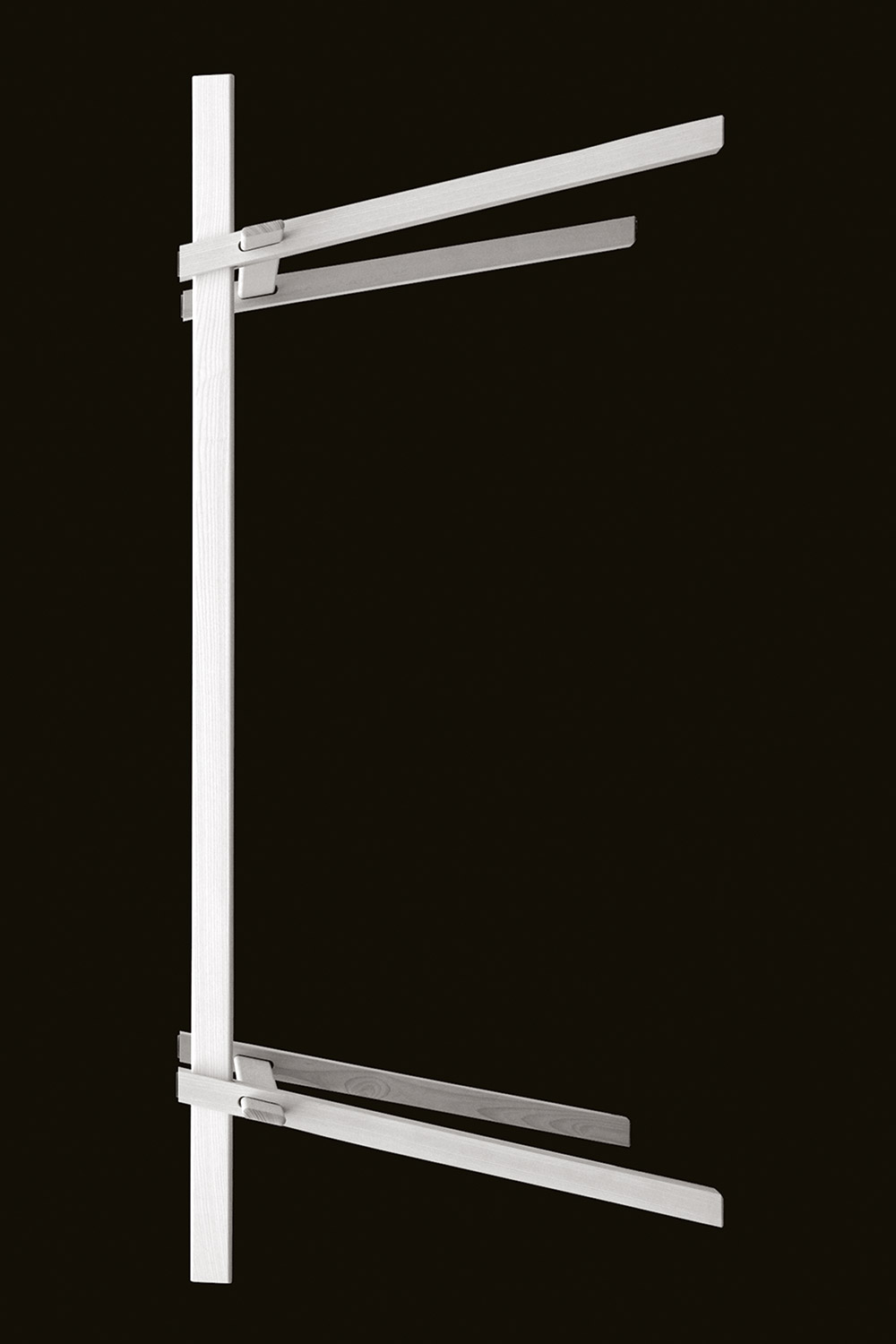
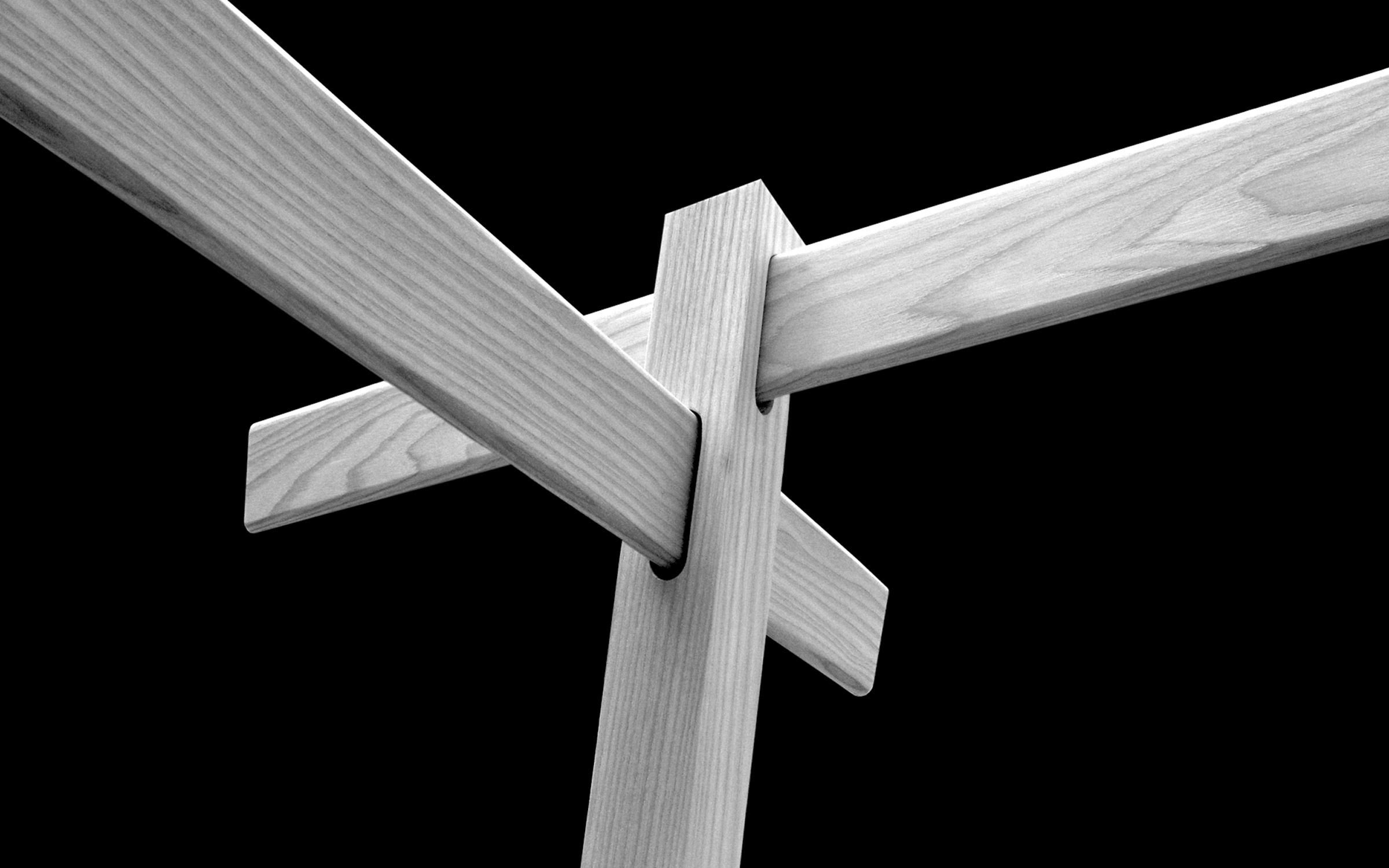
Lose Verbindung zwischen Bein und Zarge
Loose assembly between leg and rails
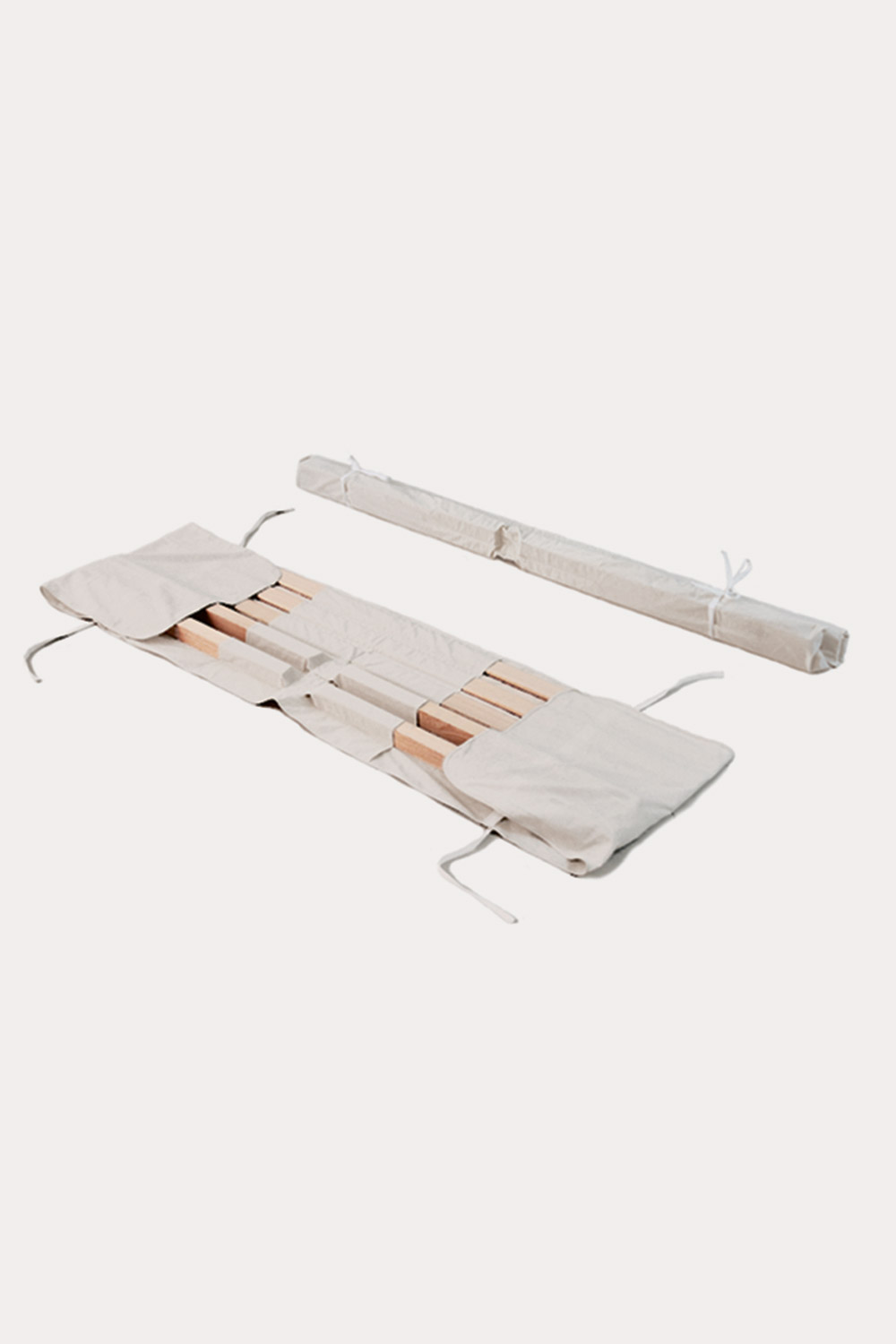
Eine genähte Baumwolltasche enthält alle acht Teile von Stand
A sewn cotton case contains all eight parts of Stand

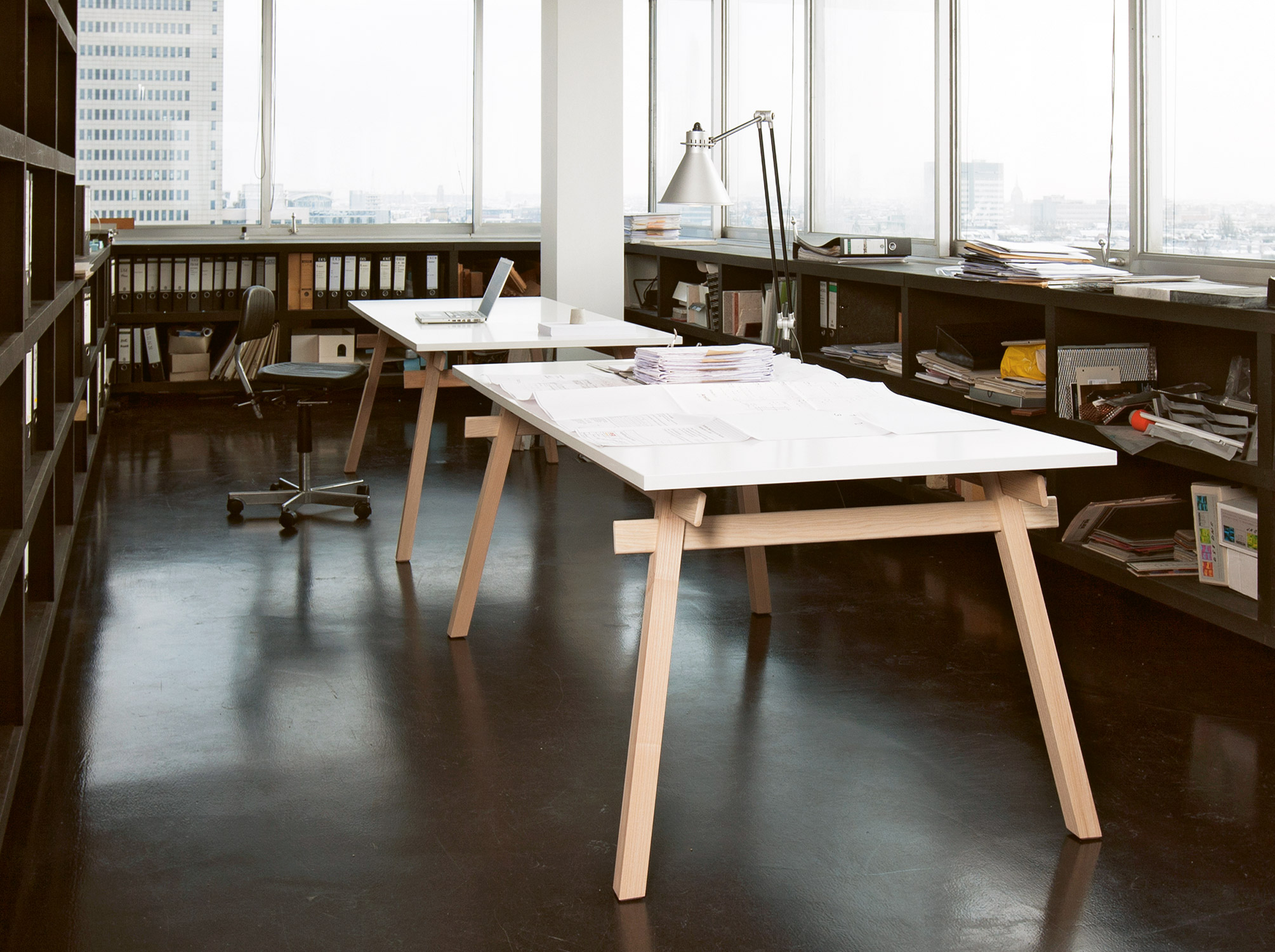
Stand im Büro
Stand in the office


Stand und der heilige Hieronymus im Gehäus, 1514, Albrecht Dürer (Collage)
Stand and Saint Jerome in His Study, 1514, Albrecht Dürer (collage)
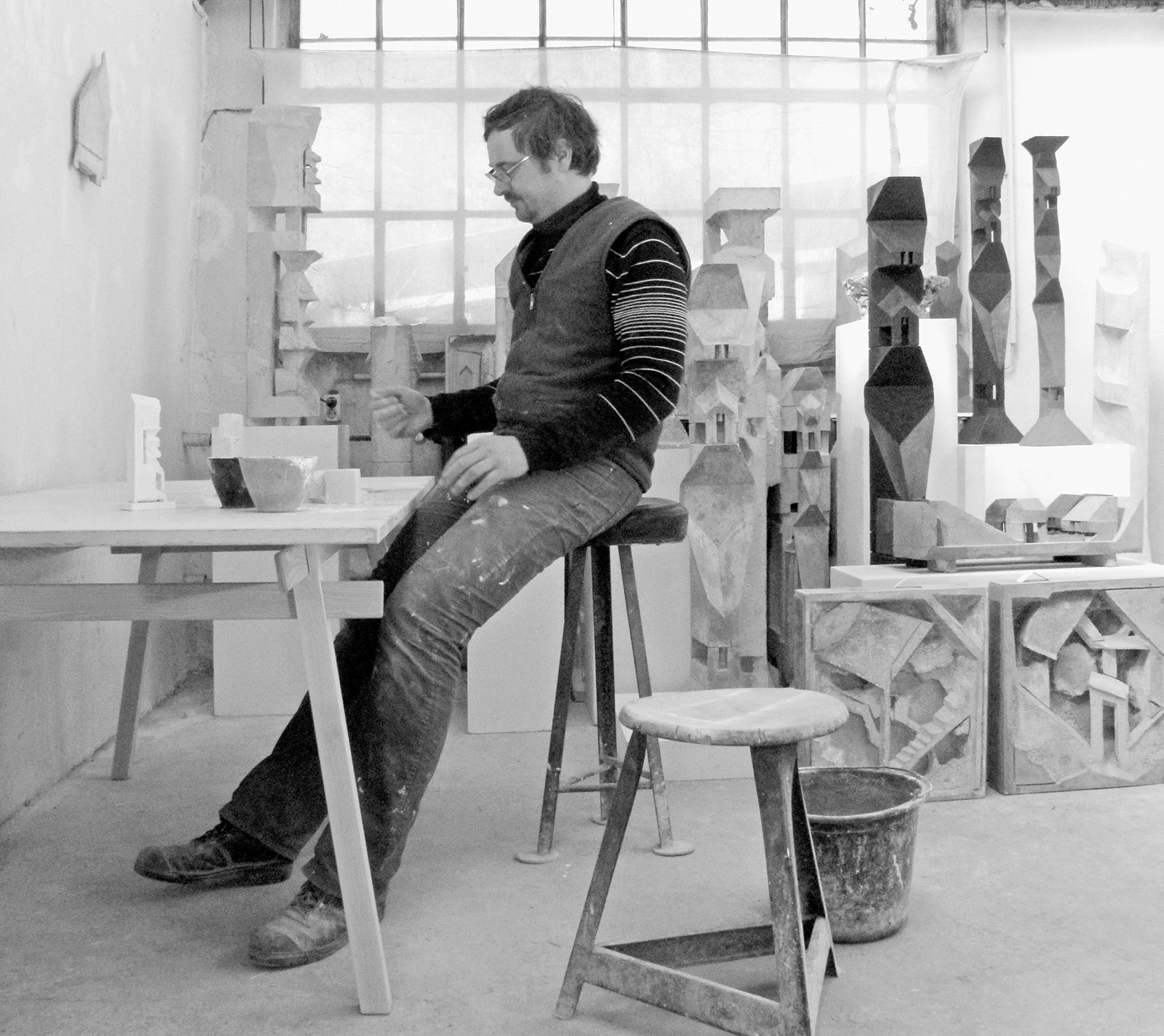
Stand im Atelier von Friedemann Grieshaber
Stand in the atelier of Friedemann Grieshaber

Stand im Studio
Stand in the studio
